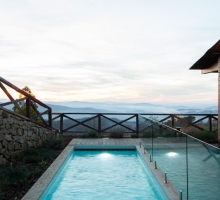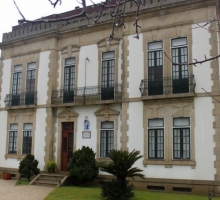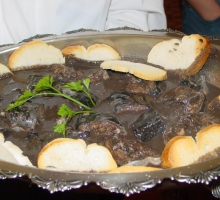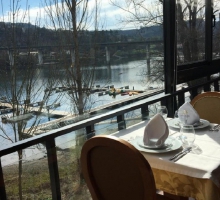Visit the Roman city of Tongobriga
The Tongobriga village is situated between the Douro and Tamega rivers, 50 km far from the city of Oporto. In August 1980 the archaeological excavations started at the place designated as "Chapel of the Moors." The Spa and the Forum are the ex-libris. In the village of Tongobriga it was created a castrejo-Roman structure that was developed in political, administrative and economically terms, resulting in the installation of a city as a consequence of the Flavian strategy of the Tarraconense planning. At the end of the first century d. C., and even in the second century, Tongobriga appears as a socio-economic organ that focuses not only residential elements, but also a handicraft production and systematic activities of exchange justifying the construction of the forum. We may think that it also emerged at this time as a structured center of power, a civitas, with natural preponderance of the surrounding region and its territory. The Tongobriga forum is noted for its size (area of 9521 m²) comprising the commercial and religious spaces. It was built in the early second century d. C., and it had a platform on the south side with access by stairs, where the shops were, protected by the gabled roof and supported by a colonnade of granite, which covered all this side of the forum. On the north side, it had a street with 7 meters wide, which stood out in two apses that ended in a nearby staircase of the spa. The Temple stood on the west side. In the East side, the forum was limited by a building whose function is still uncertain, due the state of ruin in which it was found. In the late first century d. C. it was built the Tongobriga spa, in a similar project as the ones of Pompeii and Ostia (coninbriga), being necessary to close the bathhouse known as “Pedra Formosa”, which was carved in a granite outcrop. The spa was constructed in the late 1st century. The forum and the public buildings were constructed in the middle 2nd century providing the urban center with architectural equipment imposing Tongobriga as a center ofattraction and decision. Tongobriga integrated land planning, particularly in the northwest of the Peninsula and north Meseta. The city extended by 50 hectars, what was considered medium sized, and it had its peak in the second half of the 2nd century. The housing area extended by 7 hectars, which indicates a population of 2,500 people. There was a necropoplis “out of doors” in the south side. Ceramic pieces were found in the XIX century when a path was opened. The graves excaved in 1980 show the predominance of the inicineration rite. In this cemetery, the Romans opened trences in granite outcrop with about 1.5 m long, 0.5 m wide and 0.6 m deep, where they deposited body ashes, ceramic pieces and coins, covering the graves with granite slabs and earth. In the Tongobriga territory, marked by Serra do Marão and the rivers Tâmega and Douro there are 125 identified as archeological remains that proves the occupation of the region favoured by the movement that afforded roads and the navigability of the rivers.
Location: Marco de Canaveses
The Tongobriga village is situated between the Douro and Tamega rivers, 50 km far from the city of Oporto. In August 1980 the archaeological excavations started at the place designated as "Chapel of the Moors." The Spa and the Forum are the ex-libris. In the village of Tongobriga it was created a castrejo-Roman structure that was developed in political, administrative and economically terms, resulting in the installation of a city as a consequence of the Flavian strategy of the Tarraconense planning. At the end of the first century d. C., and even in the second century, Tongobriga appears as a socio-economic organ that focuses not only residential elements, but also a handicraft production and systematic activities of exchange justifying the construction of the forum. We may think that it also emerged at this time as a structured center of power, a civitas, with natural preponderance of the surrounding region and its territory. The Tongobriga forum is noted for its size (area of 9521 m²) comprising the commercial and religious spaces. It was built in the early second century d. C., and it had a platform on the south side with access by stairs, where the shops were, protected by the gabled roof and supported by a colonnade of granite, which covered all this side of the forum. On the north side, it had a street with 7 meters wide, which stood out in two apses that ended in a nearby staircase of the spa. The Temple stood on the west side. In the East side, the forum was limited by a building whose function is still uncertain, due the state of ruin in which it was found. In the late first century d. C. it was built the Tongobriga spa, in a similar project as the ones of Pompeii and Ostia (coninbriga), being necessary to close the bathhouse known as “Pedra Formosa”, which was carved in a granite outcrop. The spa was constructed in the late 1st century. The forum and the public buildings were constructed in the middle 2nd century providing the urban center with architectural equipment imposing Tongobriga as a center ofattraction and decision. Tongobriga integrated land planning, particularly in the northwest of the Peninsula and north Meseta. The city extended by 50 hectars, what was considered medium sized, and it had its peak in the second half of the 2nd century. The housing area extended by 7 hectars, which indicates a population of 2,500 people. There was a necropoplis “out of doors” in the south side. Ceramic pieces were found in the XIX century when a path was opened. The graves excaved in 1980 show the predominance of the inicineration rite. In this cemetery, the Romans opened trences in granite outcrop with about 1.5 m long, 0.5 m wide and 0.6 m deep, where they deposited body ashes, ceramic pieces and coins, covering the graves with granite slabs and earth. In the Tongobriga territory, marked by Serra do Marão and the rivers Tâmega and Douro there are 125 identified as archeological remains that proves the occupation of the region favoured by the movement that afforded roads and the navigability of the rivers.
Location: Marco de Canaveses









